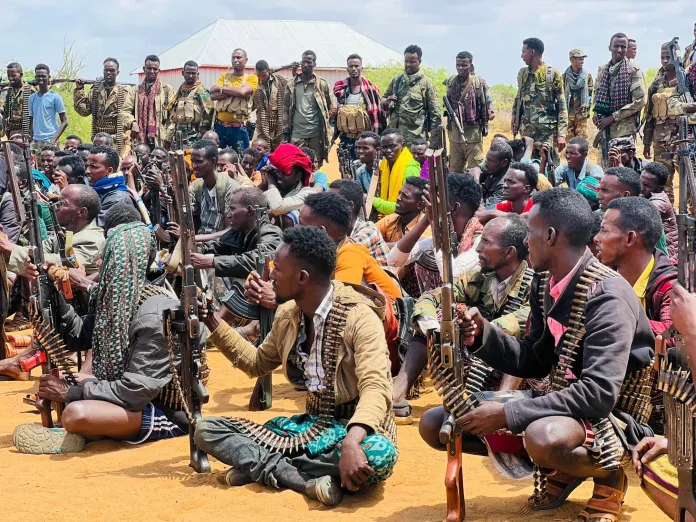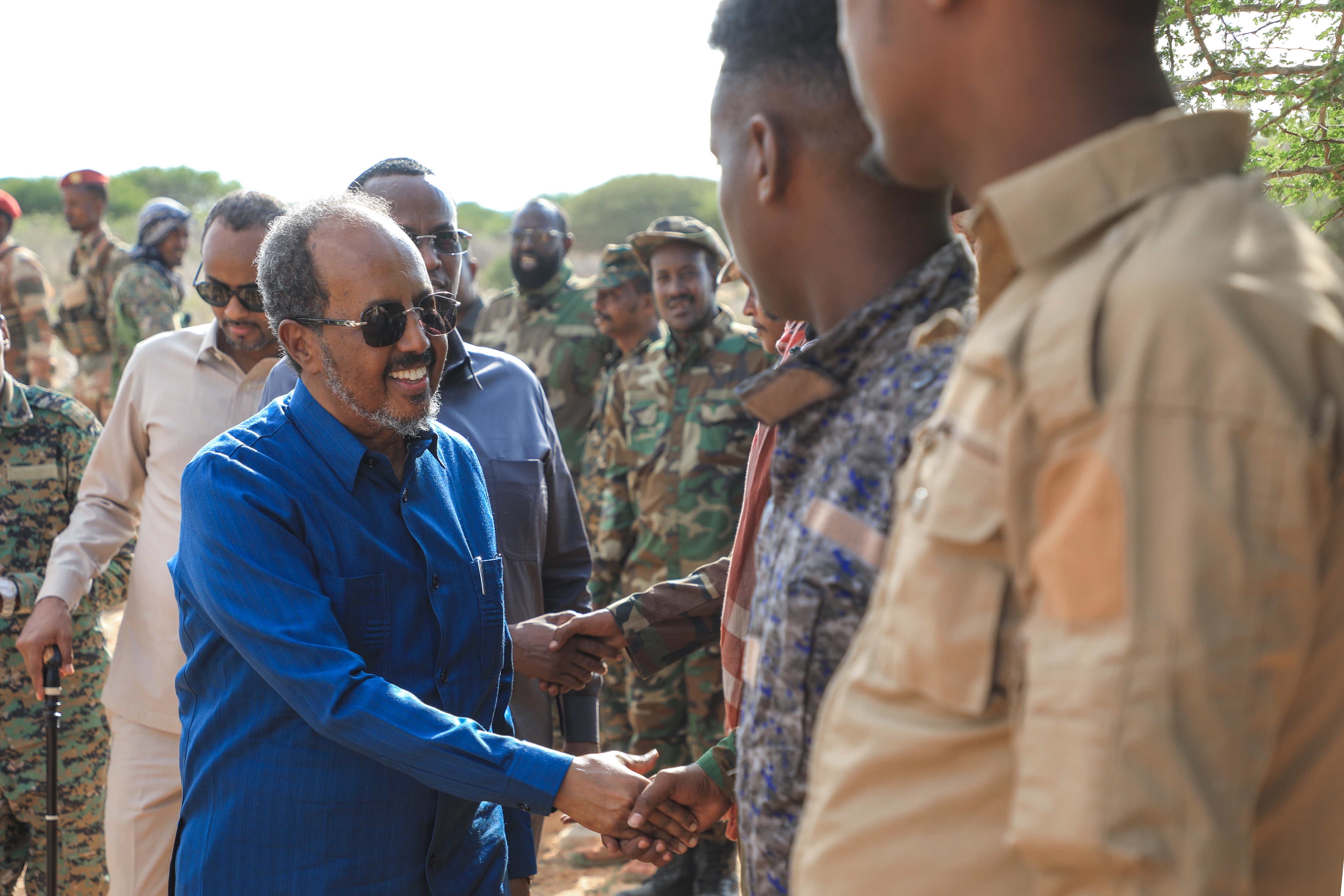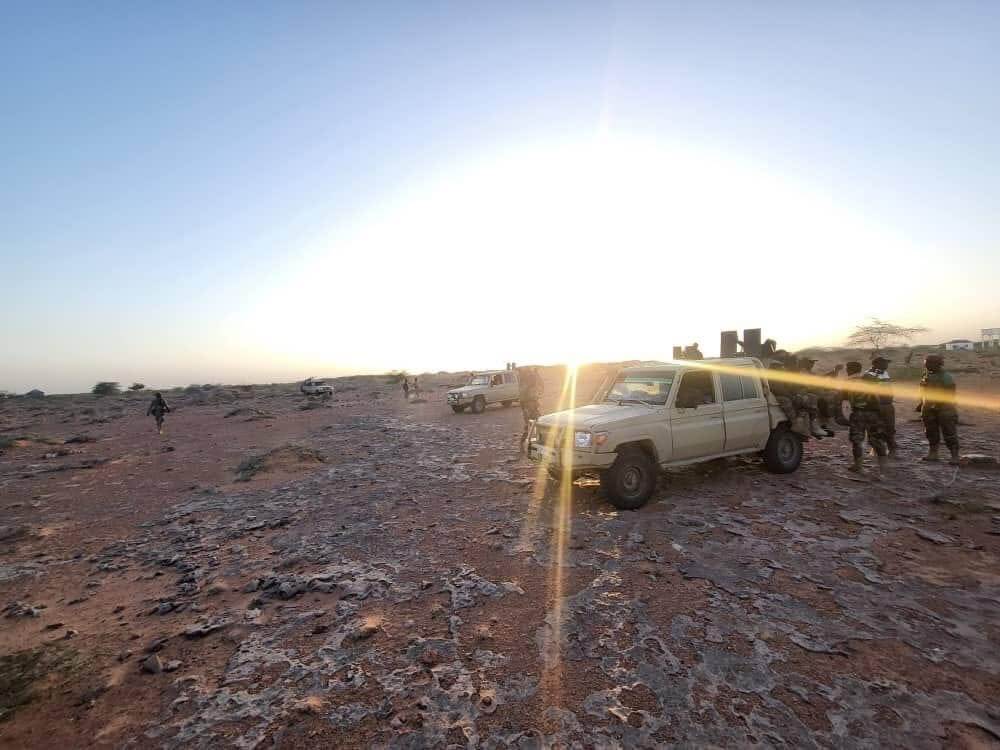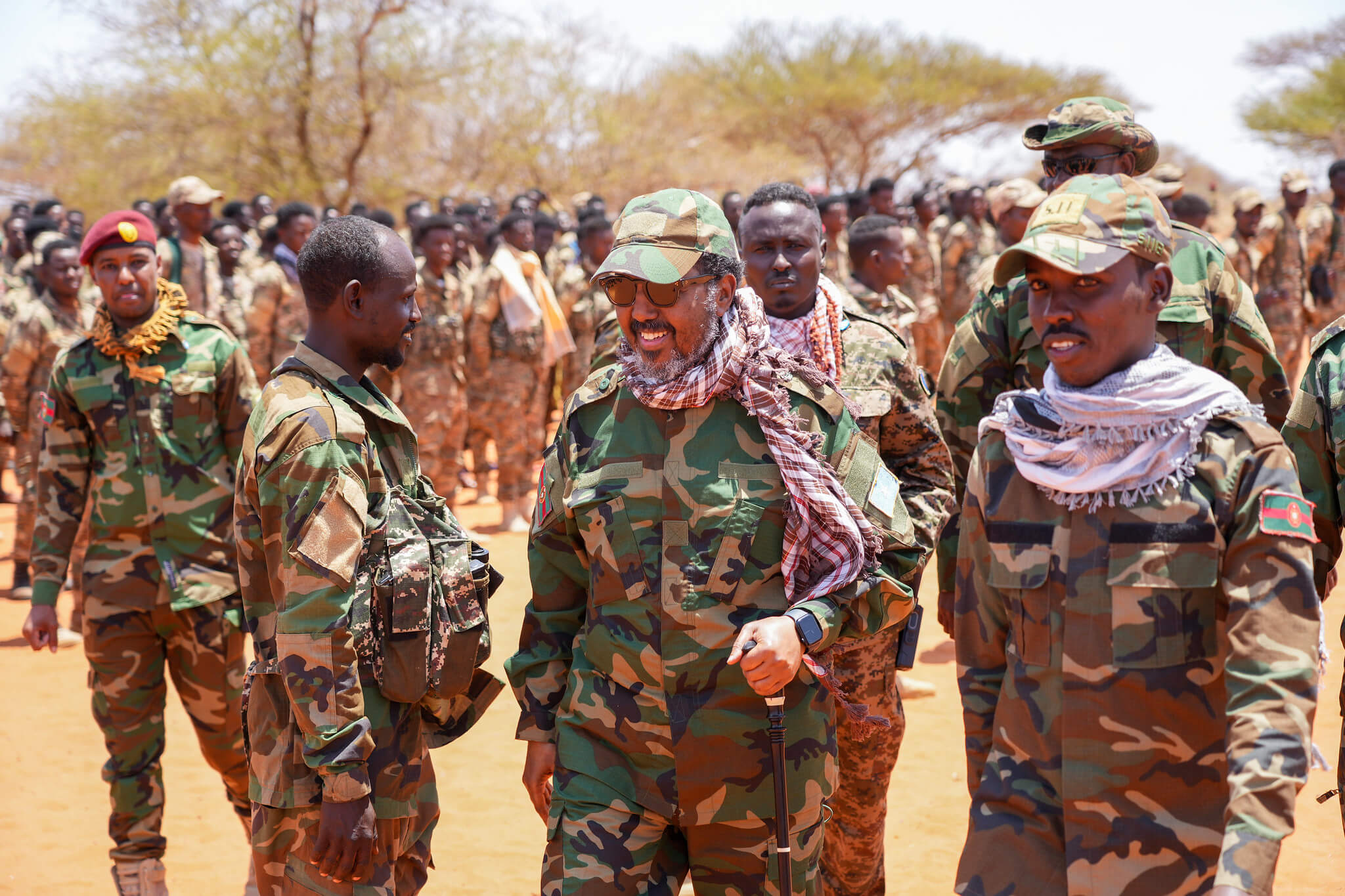
October, 2022
Somali National Armed Forces and Macawisley community defense forces gather near Moqokori town in Hiiraan.
X/Government Media
Capitalizing on the fragility to seize extensive territories, the terrorist group Al-Shabaab has been an existential threat to the Somali nation and a security threat to the Horn of Africa region in general.
The group orchestrated many heinous attacks on civilians, notably the devastating 2009 Hotel Shamo bombing during a graduation ceremony for medical students, the Hargaha & Saamaha attack in 2011 that resulted in the deaths of hundreds of students, and the October 14th attack, which remains the most devastating terrorist attack in Africa, with at least 587 people killed and 316 others injured.
Despite facing countermeasures from various Somali administrations and international support, Al-Shabaab remained resilient. Their persistence was partly due to the recurring discord and political instability, particularly following the delayed 2021 election that plunged the country into uncertainty, hindering effective security operations against Al-Shabaab and allowing the terror group to sustain its harmful presence in the country.
The group prevailed and, on top of their terror campaign, established an extortion racket that generated between $150M — $200M in revenue that financed their terror operation.
Local clans and villagers have historically tried to resist Al-Shabaab’s ruthless demands, which included extortion money, livestock, weapons, and boys to fight. However, the terror group had been ruthlessly efficient in crushing these local rebellions for years, and the lack of sufficient support from the government further hindered the efforts of these communities to counter the oppressive demands they faced effectively.
However, following his historic re-election on May 15th, 2022, and upon assuming office as the 10th president, Dr. Hassan Sheikh Mohamud made the groundbreaking decision to launch a comprehensive offence against Al-Shabaab. This effort is marked by a highly coordinated strategy that combines military and economic measures aimed at permanently dismantling the terror group’s influence and capabilities.

Somali National Armed Forces and Macawisley community defense forces gather near Moqokori town in Hiiraan.
X/Government Media

Somali President Hassan Sheikh Mohamud visits Somali National Armed Forces in Masjid Cali Guduud village in the Shabeellaha Dhexe province.
X/Government Media

Somali National Armed Forces and Community Defense take positions outside Xarar Dheere as the Al-Shabaab stronghold coastal town falls in the hands of the government.
X/Government Media
By the time President Hassan Sheikh Mohamud was elected, much of South-Central Somalia was either controlled by or under the strong influence of Al-Shabaab. The map below illustrates the extent of their control and influence in the region, highlighting the significant challenge faced by the new government in its efforts to restore peace and stability.
Upon assuming office, President Hassan recognized the urgency of these challenges. He convened various national consultative councils to consolidate a unified political strategy. The President vowed to employ a decisive mission to eradicate Al-Shabaab, underlining his commitment with the emphatic declaration:
There is no middle ground in Somalia today! Either you are Al-Shabaab, or you are the one fighting Al-Shabaab.
President Hassan Sheikh Mohamud
This statement emphasized the President’s strong determination and established a clear direction for a comprehensive approach that included military action, economic strategies, and a united political and public effort against the terrorist group.
Emphasizing the importance of local support, President Hassan lauded the efforts of community groups resisting Al-Shabaab and advocated for the expansion of such resistance across other regions to strategically undermine Al-Shabaab.
The President led a comprehensive total war that included military, financial and ideological aspects. This showed results within a short period and led to decisive successes on the ground and a decline in the group’s finances, too.
This strategy proved to be successful, with the Somali National Armed Forces and Macawisley community defense forces delivering swift blows to Al-Shabaab and succeeding in liberating millions of inhabitants across more than 40 major towns and their surrounding rural areas, and breaking Al-Shabaab’s remaining foot-soldiers into two fronts: a front that retreated to the west of Hirshabelle and a Galmudug front that has been isolated from the rest of the terrorist group’s stronghold areas.
In total, more than 60 battles have taken place in the provinces of Shabeellaha Dhexe and Hiiraan throughout the offensive. The graphic below highlights the approximate locations central to these battles and underscores their significance. The outcomes of these confrontations had a domino effect on nearby Al-Shabaab strongholds, leading to the retreat of their fighters following defeats in these key battles, thereby significantly weakening their presence in the state.
Like in Hirshabelle, the Macawisley community defense forces in Galmudug have, for some time, engaged in combat against the menace of Al-Shabaab across many locations, without significant acknowledgment or support from the government. The community has ideologically rejected Al-Shabaab and refused to comply with their extortion demands, turning several towns and villages into prolonged battlegrounds.
The war declaration by President Hassan Sheikh Mohamud brought a renewed spirit and enthusiasm, significantly re-energizing the community. With the government now providing support, the community defense forces, alongside the Somali National Armed Forces, have accelerated the pace of operations. A vast expanse of land in central Mudug was swiftly cleared, dealing the most significant blow to Al-Shabaab on January 16th, 2023. On this day, the SNAF and Macawisley community defense forces liberated the coastal district of Xarar Dheere, located at the southern tip of Mudug province. The town and its administrative division that had been under the brutal control of the terrorist group for almost 15 years.
The war against Al-Shabaab in Somalia has provided valuable lessons on the path to achieving national aspirations for peace and stability. A critical takeaway is the indispensable role of improved operational planning and political unity. The effective coordination at a national level, incorporating community volunteers like the Macawisley, has been paramount to the gains made against Al-Shabaab. These efforts underscore the importance of a unified approach that leverages both military and local community support, highlighting that with determined and cohesive strategies, Somalia can significantly reduce, if not completely eliminate, the influence of Al-Shabaab.
Moreover, the campaign has cast light upon the costly nature of war, both in terms of resources and human lives. Despite the major successes in driving Al-Shabaab out of significant territories and containing their capabilities, the war has not been without setbacks. Isolated incidents, such as the attack on Cowsweyne, serve as stark reminders of the ongoing challenges. In this encounter, although they managed to repel the attack, the troops and community volunteers sustained losses, the exact numbers of which could not be independently verified. These events emphasize the unpredictable and treacherous journey towards peace, underscoring that setbacks are an inevitable part of the struggle against terrorism and that some will pay the ultimate sacrifice for the citizens to live a meaningful life.

President Hassan Sheikh inspects the frontline in Maxaas town in Hirshabelle / Sept. 5, 2023.Villa Somalia
Reflecting on the progress made 21 months after President Hassan Sheikh Mohamud declared the war on Al-Shabaab, it is evident that the achievements thus far represent a significant stride towards peace and stability. However, it is crucial to recognize that the current phase constitutes less than 50 percent of the president’s objective to dislodge Al-Shabaab from the entire country. The group still maintains a large presence in areas west of the Shabeelle river, with their influence extending all the way to Jubaland, and controls the entire Jubbada Dhexe province. The group also maintains presence around the Galgala mountains in Boosaaso district. This reality underscores the need for continued vigilance and concerted efforts to combat their presence.
Despite these challenges, there is a glimmer of hope as normal life begins to return to communities liberated from Al-Shabaab’s grip. Basic government services such as education are resuming, livelihoods are being restored, and the establishment of rule and order is underway. These developments signal the beginning of a new chapter for Somalia, one where peace and stability are within reach. The journey ahead remains daunting, but with continued resolve and determined leadership, Somalia can forge a path towards a future free from the shameful chapter of Al-Shabaab.
Visual story, illustrations, and original research by Goobjoog.